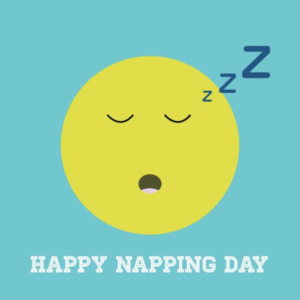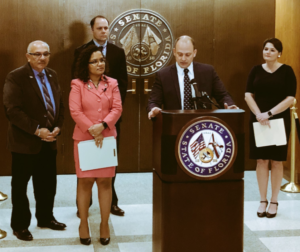 Today, March 12th, 2018 is National Napping Day. I am going to be completely honest, I took part in this special day today. I love sleeping so I was more than happy to be apart of the celebrations. My partner and I are quite heavy sleepers, so we have got the perfect bedroom set up. I’m not only a heavy sleeper, but I’m a stomach sleeper too – hence why I spend forever shopping for best mattress for stomach sleepers. Luckily I found the perfect one in the end, and its amazing! All ready for the big event today. It’s the right temperature, we have an amazing mattress, and our bedding is silk. This day had me thinking about something I have to be reminded of quite often by friends, family, and medical professionals. Sometimes it is okay to slow down. Without taking time for self care there is no way to maintain the lifestyle that I have. It just cannot be sustained.
Today, March 12th, 2018 is National Napping Day. I am going to be completely honest, I took part in this special day today. I love sleeping so I was more than happy to be apart of the celebrations. My partner and I are quite heavy sleepers, so we have got the perfect bedroom set up. I’m not only a heavy sleeper, but I’m a stomach sleeper too – hence why I spend forever shopping for best mattress for stomach sleepers. Luckily I found the perfect one in the end, and its amazing! All ready for the big event today. It’s the right temperature, we have an amazing mattress, and our bedding is silk. This day had me thinking about something I have to be reminded of quite often by friends, family, and medical professionals. Sometimes it is okay to slow down. Without taking time for self care there is no way to maintain the lifestyle that I have. It just cannot be sustained.
Although the occasional nap is obviously amazing, this is not the only way to practice self care. Self care also will not look the same for everyone.
5 Ways to Increase Your Self Care
- Set aside a time that you can do something you enjoy daily – this can be anything that you find relaxing and that brings you peace. Imagine setting aside time everyday to read a book, write in a journal, or take a relaxing bath.
- Exercise – spend some time exercising everyday. This does not mean you need to plan to head out to the gym everyday but pick something reasonable to you. Stretch out, do some yoga, take a walk around the block. What level of exercise do you think is reasonable?
- Prioritize Sleep – This is something that is essential to continued maintenance of lifestyle. Prioritizing sleep means trying to sleep at night but also taking time for the occasional nap as needed. If you struggle to do this usually, it might be worth looking at getting a hybrid mattress. They are designed with comfort in mind to ensure that people fall asleep much easier. To find some reviews before purchasing one, look at https://simplyrest.com/best-hybrid-mattress/ for example.

- Be Accepting of Help – It seems kind of counterintuitive that welcoming in help is a part of increasing your self care, however, it is really important that you allow others in to help you. It is also important to balance that help. If you do not want someone at your home because you just don’t feel ready for it then don’t feel pressure to accept that type of help. Think about how someone can help you on your terms.
- Unplug Socially As Needed – Sometimes there is a need to step away and socially take a mental break. This can be one of the most challenging things to do and it isn’t something that will be a part of self care for everyone.
So, how about you? Did you take part in #NationalNappingDay? What is one way you can increase your Self Care?
Read more about Erica’s story at www.t0g.ce7.mywebsitetransfer.com/erica
